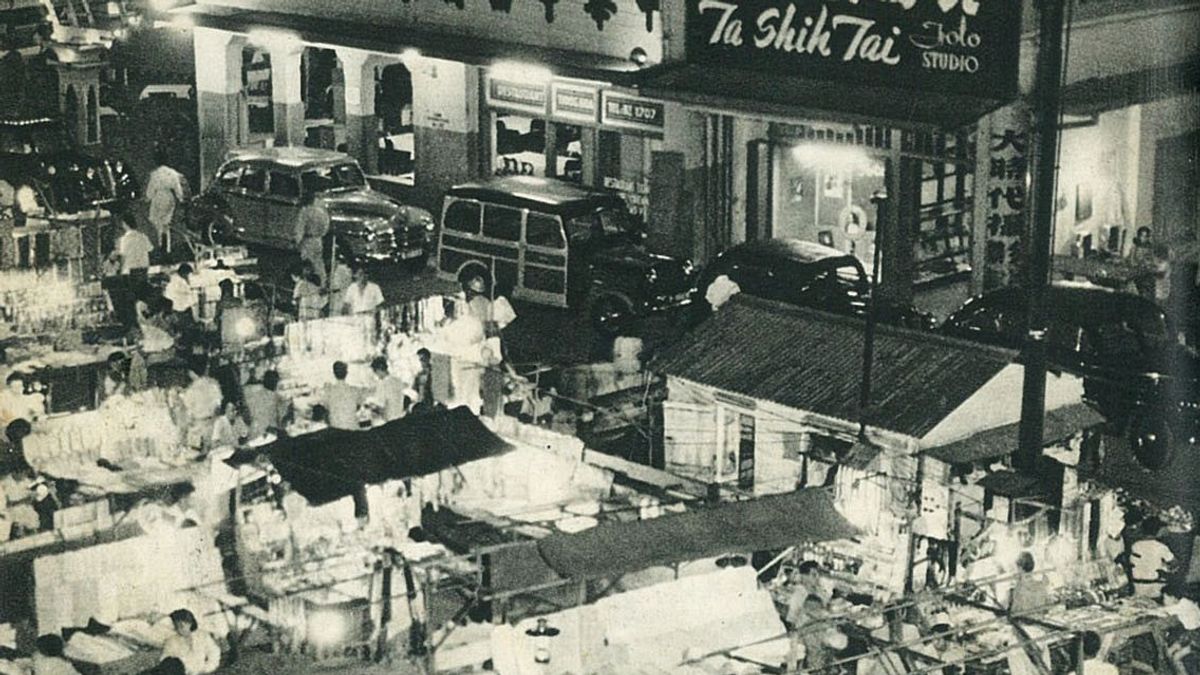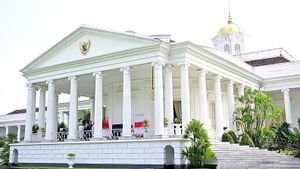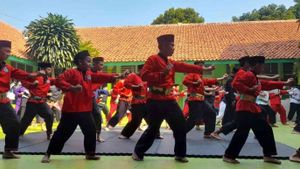JAKARTA - Since the birth of Batavia City, ethnic Chinese have become an important part of the city which is nicknamed the Queen of the East. In fact, the ethnic Chinese had occupied a higher caste than the native people. They are number two, only below those of Europe. Glodok, west of Jakarta, has witnessed their triumph.
The role of the Chinese was so influential in every aspect of life in Batavia, from social to economic. Glodok is known as one of the "China Towns" in Batavia. Not a few people associate the origin of the name Glodok from the term spoken by the Chinese.
As quoted by Rachmat Ruchiat in the book The Origin of Place Names in Jakarta (2018), he revealed that some say Glodok comes from the word "grojok", onomatopoeia or an imitation of the sound of running water from a shower.
"It makes sense, because there, around 1670, there was a kind of water reservoir from Ciliwung that was poured out with a wooden shower from a height of approximately ten feet. The word Grojok was spoken by totok Chinese, the majority population of the area in ancient times. Then changed to Glodok according to his tongue, "said Rachmat Ruchiat.
Another explanation states that the name Glodok is taken from the name of the bridge that crosses Kali Besar in the area, namely the Glodok Bridge. It is called that because at the end of the area there were stairs attached to the edge of the river which was made in 1643.
"The ladder is usually used for bathing and washing by local residents. In Sundanese, such a ladder is called Golodok, just as it is called a household. "Bathing at times at that time was not only the custom of the Indigenous people, but also the general habit of the Batavian population, including Dutch people who were in high positions," he added.
Apart from being a Chinatown, Glodok during the Dutch era was also widely known as an economic area that kept pumping the pulse of life in Batavia. All kinds of businesses and services are present at Glodok. Regarding the bustle of Glodok, many people have captured the Chinatown area through photos in the 19th and early 20th centuries.
Images of Chinese people walking back and forth with long braided hair back and the front shaved smooth became a typical Glodok style scene in its time. It is a tradition inherited from the Manchu dynasty which ruled mainland China for three hundred years.

One of the reasons for this legacy tradition to survive was because the Dutch issued regulations that perpetuated the existence of ethnic Chinese as the number two citizen in Batavia. In the verse of the rules, written prohibitions for Chinese people to dress like native people or Europeans. To enforce this rule, the Company even prepared a fine or imprisonment.
Because of this, Glodok has many meanings in Jakarta's contemporary history, especially regarding the footprint of the Chinese in Jakarta. In the future, Glodok will also become a history of the struggle of the Chinese people, who are actually migrants, starting from glory, downturn, and resistance to the fate of oppression.
“There are many things to remember Glodok past: the Chinese capitants for hundreds of years of success, thousands of Chinese people were brutally slaughtered by the Dutch, Chinese nostalgia (Chinese New Year), Cap Go Meh (15th night of Chinese New Year), and Peh Cun. (the 100th day of the Chinese New Year), ”said Alwi Shahab in the book Time of the Netherlands, Get Drunk, Born in Batavia (2013).
Witness the massacre of ethnic Chinese in 1740As mentioned above, Glodok has also witnessed the history of the Company's outrage at ethnic Chinese in 1740. People are familiar with this genocide-like bloody act with "chinezenmoord" or the killing of Chinese people. Even so, people in Batavia generally recognized the incident as "Geger Pacinan" or "Glodok Tragedy."
In historical records, the Glodok tragedy which was triggered by arbitrary Dutch actions against ethnic Chinese in Batavia then led to extraordinary rebellion. We once discussed this incident in the article "Geger Pacinan 1740: The Flood of Chinese Blood in Batavia". However, the strength of the Chinese at that time was not enough against the Dutch who had many modern fleets and weapons.
This extraordinary rebellion turned into a bloody massacre of over 10 thousand Chinese people. As we have reviewed in "The Death of Ethnic Chinese at the Hands of VOC Governor General Adriaan Valckenier", the order to massacre was announced directly by Governor General Adriaan Valckenier on October 10, 1740, through a warrant that read, "Kill and massacre the Chinese people."
It was through this order that Batavia's atmosphere became very chaotic. VOC soldiers, even sailors whose ships were leaning on the Sunda Kelapa Harbor were asked to intervene in carrying out the massacre. As a result, there was the merciless rape, looting, arson, and murder of all the Chinese they met.
In fact, Chinese people were being treated at the Chinese Hospital which was located in front of the Jakarta Kota Station. Children and women are also victims. A detailed description of the incident was revealed by GB Schwarzen in the book Reise in Oost-Indien (1751). He wrote about his experience of being trapped in an incident which is also known as geger pacinan.
“At noon, at one o'clock, the city started burning because of the Chinese people. Because they wanted to burn themselves rather than fall into the hands of the VOC. Often up to five people hang themselves from the blocks of their house. To make matters worse, the massacre continued to the hospitals owned by the Chinese. We were told to kill all the patients apart from the blind, "said Schwarzen.
Not only Schwarzen. Willard A. Hanna in the book Hikayat Jakarta (1988) also illustrates how dark the massacre was. It was recorded that more than ten thousand Chinese people were killed, five hundred people were seriously injured, seven hundred homes were damaged, and Chinese goods were looted.
"Suddenly, in an unexpected, instantaneous voice of fear echoed throughout the city, and there was a most heartbreaking sight and robbery in every corner of the city," wrote Willard A. Hanna.
The English, Chinese, Japanese, Arabic, and French versions are automatically generated by the AI. So there may still be inaccuracies in translating, please always see Indonesian as our main language. (system supported by DigitalSiber.id)










